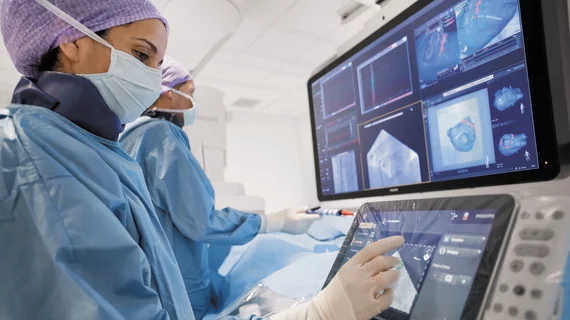Fewer females consider careers in interventional radiology, with mentorship a key motivator
Fewer females are considering careers in interventional radiology, with mentorship a key motivator, according to survey data shared in Clinical Imaging [1].
Only about 16% of women across five U.S. medical schools said they were strongly considering an IR career compared to 27% of men. Meanwhile, 21% of those in racial and ethnic groups that are underrepresented in medicine said they’re seriously considering interventional radiology as their profession compared to 21% of those who do not fit the definition.
On a four-point scale, women interested in IR cited female mentorship as a stronger motivator (2.5/4) when compared to men (0.4/4). Those uninterested in the profession claimed “direct patient care” (3.6), female mentorship (2.5) and “longitudinal care” (2.8) as their motivators.
“We conclude that a lack of diversity and inadequate gender- and ethnicity/race-specific mentorship may adversely impact medical student interest in IR,” Jocelyn L. Cheng, MD, with the Warren Alpert Medical School of Brown University, and co-authors wrote July 6. “Targeted efforts to increase numbers and visibility of women and members of [underrepresented] racial and ethnic groups in clinical practice and mentoring positions may improve recruitment of members of these groups into IR.”
Cheng et al. conducted their 19-item survey between late 2018 to early 2019, sending the questionnaire to all matriculants at five schools that varied by region, class size, etc. They received a total of 346 responses from women and another 258 from men. About 18% of women interested in interventional radiology (9/50) reported adequate gender-specific mentorship in medical school, while 5% of underrepresented minorities (1/19) said the same.
The findings come as representation of women and minorities in the specialty continues to lag. Only about 9.2% of active IR physicians and 7.3% of faculty members are women, according to demographic data from the Society of Interventional Radiology. Though the study is limited by its modest response rate, Cheng et al. believe this information is helpful in addressing these trends.
“While family and lifestyle priorities are frequently cited as significant reasons for female underrepresentation in surgical subspecialties, such differences may not be generalizable to interventional radiology, and they fail to explain racial/ethnic disparities in IR career choice,” the authors advised. “Our findings support the hypothesis that mentorship impacts IR career choice.”
Read more at the link below.

